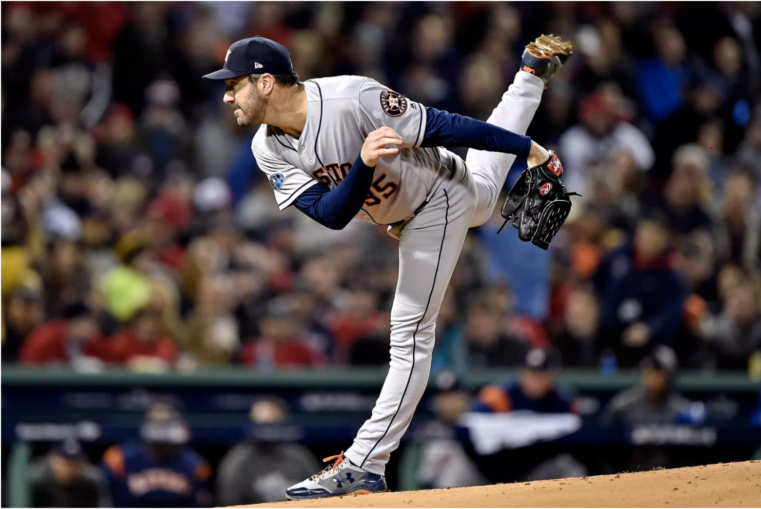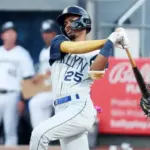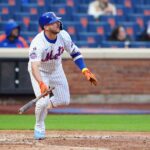
The Mets’ biggest need this offseason is pitching.
Jacob deGrom will opt out of his deal, Chris Bassitt will likely decline his 2023 option, Taijuan Walker will do the same, and the bullpen will likely see above 50% turnover with Edwin Diaz, Seth Lugo, Trevor May, Mychal Givens and others all entering free agency.
So who is available for the Mets to sign? We’ll do more in-depth looks into many of these options in upcoming free agent profiles, but for now, let’s take a look at some names that will hit the market when the World Series ends.
Top Tier
Jacob deGrom
Yes. Whatever the question is, yes.
Despite injuries that held deGrom out for a whole year between 2021 and 2022, he’s still the best pitcher in baseball when healthy (which he’s been for the most part of his career). He’ll be the best free agent pitcher on the market.
He’ll be 40 before the 2023 starts, but he also is probably going to win the 2023 AL Cy Young Award. Some team is going to give him Max Scherzer-level money for a season or two.
He’ll likely be a Dodger for life, especially after opting to not sign with his hometown Texas Rangers in the 2022 offseason when reports indicated he might. But he should also get a high average annual value deal after posting a 2.28 ERA (2.57 FIP) over 126.1 innings. Will the Dodgers give him a raise from the $17 million he earned this year?
Solid No. 2s and 3s
Chris Bassitt
The Mets saw first-hand Bassitt’s ability to carry a rotation for weeks at a time. He threw more innings in 2022 than he had in any other season in his career. Despite showing some fatigue (understandably) in the final weeks of the season, he shown durability over the past four seasons.
He’s a perfect compliment to guys like deGrom and Scherzer, and teams will likely pay Bassitt as a quality No. 2 or 3.
Eovaldi has anchored the Red Sox’s makeshift rotation over the last four seasons, living up to his $64 million contract after his heroic 2018 World Series performance. Though he’s largely stepped up as a No. 1 over the last three years, he’s probably more of a middle-of-the-rotation guy at this point in his career.
Potential No. 2s and 3s
Clevinger missed all of 2021 with Tommy John surgery, but he returned in May, making 22 starts and one relief appearance the rest of the way. His 4.33 ERA (4.98 FIP) is over a full point higher than his tenure in Cleveland, but he has shown flashes in his old self as he still recovers. At his peak, he can be a No. 2 starter. However, he’ll probably have to take on a short-term deal to prove he can reach that level again.
Anderson resurrected his career with the Dodgers, relying on his fastball and changeup to pitch to a 2.57 ERA (3.31 FIP). He halved his home run numbers, and if he can repeat years like this one, a team could have a solid mid-rotation guy into his mid-30s.
Recovering from Tommy John, Syndergaard has transformed into less of a power strikeout pitcher and more of a ground ball pitcher who generate a lot of contact. Still, he pitched to a 4.12 ERA (3.66 FIP) over 24 starts and one relief appearance with the Angels and Phillies. It was his first full season since 2019, and at 30 years old, he has plenty of time and potential to find success at the top of someone’s rotation.
Taijuan Walker
Walker has had great first halves of the last two seasons, earning All-Star nods both years. He regressed afterward, though his 2022 second half was far better than the 2021 second half. As he continues to build stamina (as he seemingly learned how to push through a wall this season), Walker can be a great middle-of-the-rotation guy if he can pitch anywhere close to his first two halves of 2021 and 2022.
Quintana, similar to many on this list, righted the ship this season after multiple rocky years. He pitched great for the Pirates to start the year on a $2 million contract, and he pitched even better once he was traded to the Cardinals (2.01 ERA, 2.60 FIP). He’ll be 34 next season, and if he can sustain close to what he did this year, he can really add depth to a rotation.
Will They Opt Out?
Another guy with durability concerns, Rodón has made it through the last two season without any major injuries. (He bounced back from late season shoulder troubles in 2021 with sustained velocity in the playoffs.) He’ll likely opt out of his $22.5 million player option for 2023, and he’ll hit the market with 310.2 innings under his belt. Someone’s going to pay him big money over multiple years.
Similar to deGrom, Sale has an option to opt out of the two years and $55 million in his contract. Also similarly to deGrom, Sale has spent much of the last three seasons injured. Conversely to deGrom, though, Sale hasn’t been able to come back from those injuries and sustain for any time. After Tommy John surgery in 2020, he returned in August 2021 and made nine starts the rest of the year. He then missed most of the start of 2022 due to a rib fracture sustained while throwing, then he broke his finger on a comebacker in his second start back in July.
Will someone guarantee him more than $55 million on the open market after just 11 starts in three years? Sale will soon have to decide if he’ll take that risk
The Twins have a $12.7 million team option in Gray’s last year of his contract. While stranger things have happened, the team likely won’t decline the option despite an injury-filled seasons where he still managed a 3.08 ERA (3.41 FIP) in 119.2 innings.
Back-end Starters
Gibson was dealt from the Rangers to the Phillies in the middle of 2021 after a hot start to the season with Texas. However, the now-34-year-old regressed to his career numbers, posting a 5.06 ERA (4.21 FIP) over his time with the Phils. He can be a solid option to man the back-end of a rotation with a good defensive behind him.
At this stage of his career, Cookie is a back-of-the-rotation pitcher, as the Mets saw in 2022. Finally healthy after a tumultuous 2021, Carrasco had some great starts against bad teams, some rocky starts against good ones, and plenty of ups and down in between. The Mets can pick up his 2023 option for $13 million, but if they don’t, they can still try to work out a more team-friendly contract over multiple years.
After the Mets almost traded for Manaea before the season (they nabbed Bassitt from Oakland instead), Manaea made 28 starts for the Padres with an ERA that boarded 5.00. Now that teams don’t have to give up capital for him, more teams could be interested in his services.
After the Reds surprisingly waived Miley in November 2021 offseason after a great season, the Cubs quickly picked him up. He only made eight starts for the team, though, because a shoulder injury derailed his season. He’s a high risk, high reward play at this stage of his career.
The old Brodie van Waganen signee made his way to the Tampa Bay Rays in 2021 then the Boston Red Sox in 2022, improving each year after leaving the Mets. He had a great first five months of the 2022 season, then he got shellacked in September. He still proved enough last season to be someone’s No. 4 or 5 next year.
Taillon amassed 320 innings with the Yankees over the last two years, pitching to a modest 4.08 ERA in Yankee Stadium. He’ll be 31 next year, and he’s shown some level of reliability as an average pitcher. He has exactly a 100 ERA+ each of the last two seasons.















